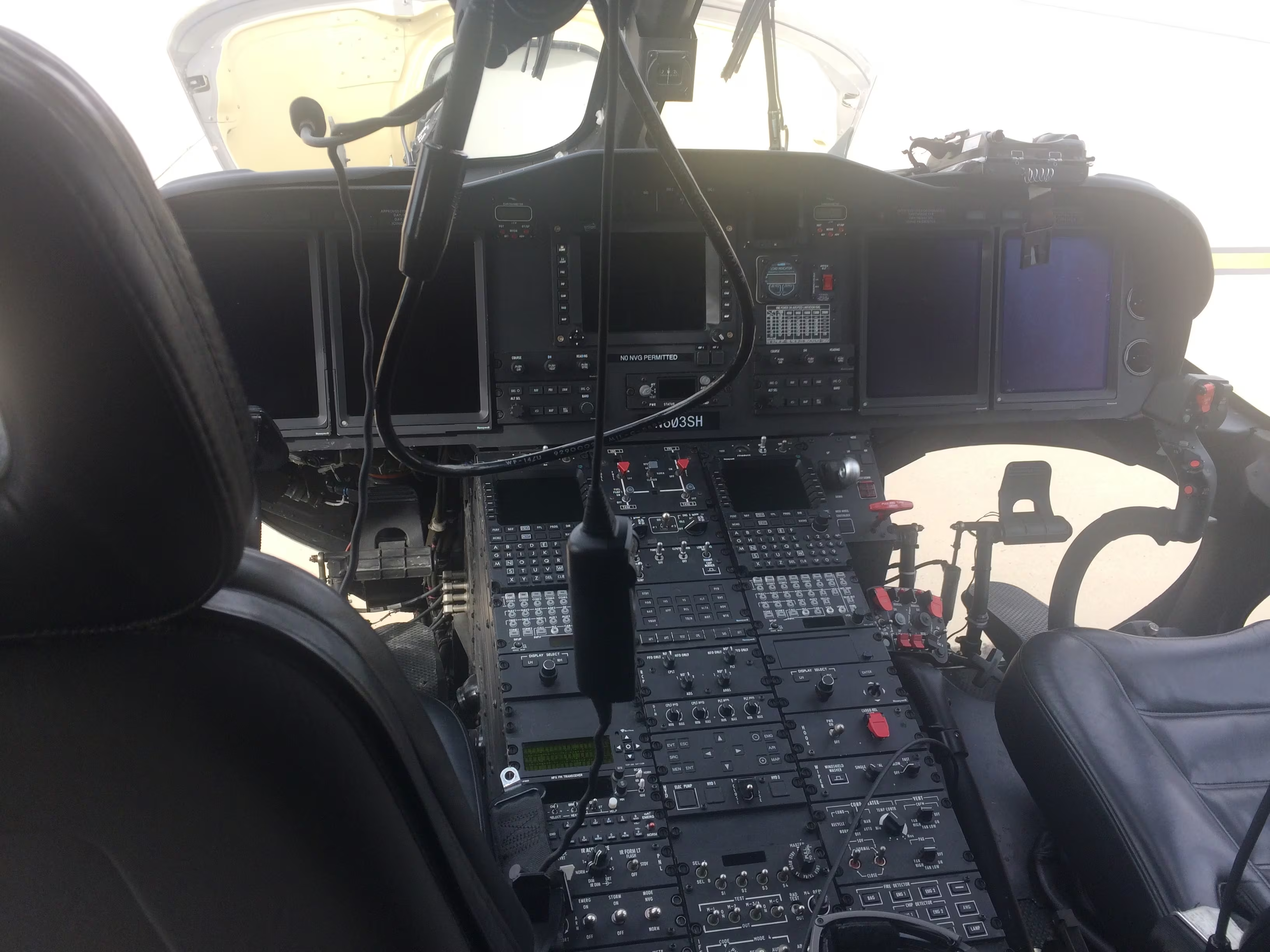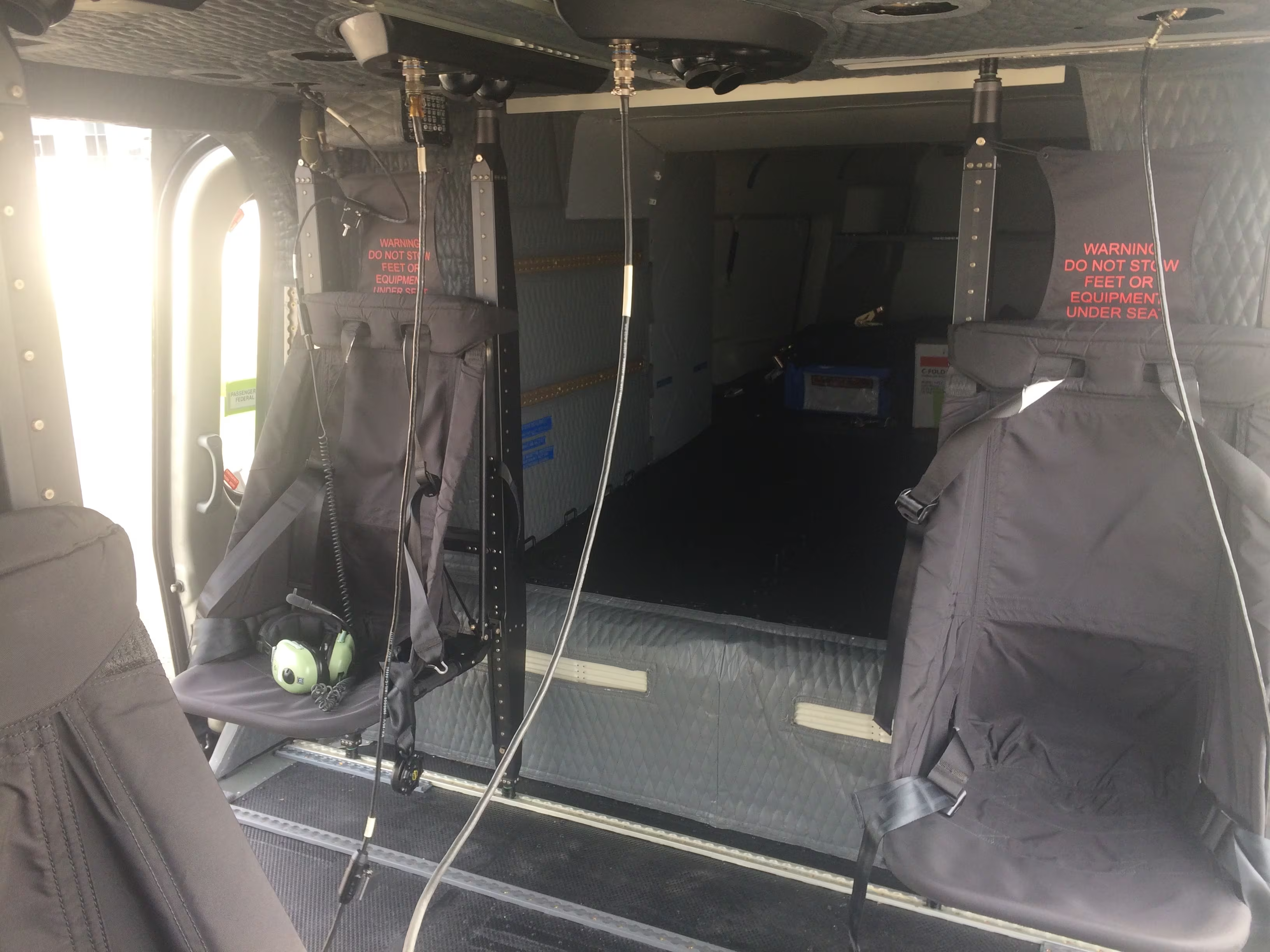ORLANDO — U.S. aerospace giant Boeing and Italy's Leonardo are jumping into the U.S. Air Force's UH-1N Huey replacement competition and will offer a militarized version of the Italian firm's commercial AW139 helicopter.
The aircraft, dubbed the MH-139, will need to incorporate a number of modifications to bring it in line with the service's survivability specifications. But the team is hopeful that leveraging Leonardo subsidiary AgustaWestland's hot AW139 production line in Philadelphia will result in the lowest-cost entry.
"The lower operating cost, the increased reliability, the improved maintainability all will translate into savings for the Air Force," Rick Lemaster, Boeing's director of tiltrotor business development, said in a February briefing to reporters ahead of the Air Force Association's Air Warfare Symposium. Boeing and Leonardo estimate that the MH-139 will cost more than a billion less than competitors' offerings over a 30-year life cycle.
The MH-139 can meet Air Force requirements to carry nine fully equipped troops for an unrefueled range of 225 nautical miles.
"Things that are more military unique, that aren't present in the civil or the paramilitary aircraft that we provide are things that we have to go develop that certification plan," said Lemaster, who declined to detail what modifications are needed.
"We have our path forward on how, working with Leonardo and our own Boeing engineers, we will be able to create the artifacts that will allow the Air Force to do their certification of the aircraft."
The Air Force plans to buy at least 84 helicopters to replace its fleet of UH-1N Hueys, and the service has put a premium on meeting requirements at the lowest possible cost. However, all of the competitors would need to incorporate nondevelopmental technologies to meet those standards. In February , the service announced that it was delaying the start of the bidding process until this summer, when a final request for proposals will be issued.
Boeing assumes the Air Force will add a couple months for an engineering, manufacturing and development, or EMD, phase, but the service wants to keep its timeline roughly the same, with a contract award in fiscal 2018. The first delivery of the 84-aircraft program of record would occur as early as 2020.
Lemaster said the company was confident it could meet the service’s original schedule, so it doesn’t foresee a problem with delays during EMD.
Boeing and Leonardo publicly unveiled its MH-139 offering Thursday morning at the AFA Air Warfare Symposium, but journalists got a sneak peak at the aircraft last weekend.

A look inside the cockpit of an MH-139, Boeing and Leonardo's entrant in the UH-1N replacement competition. The civil AW139 model shown to reporters on Feb. 25 does not yet incorporate the modifications needed to bring it in line with the Air Force's specifications.
Photo Credit: Valerie Insinna/Staff
The companies brought an AW139 emblazoned with a sharp, gray paint job and Boeing logo to Washington on Feb. 25, intending to show off its performance to defense reporters during flights. Unfortunately and embarrassingly, the demos were called off after pilots discovered that a computer processing component needed to be replaced.
In an operational situation, the helicopter would be able to fly without that component, and a repair would normally take only a couple of minutes to swap one processor card for another, the test pilots reassured reporters. However, with no spares readily at hand, Boeing and Leonardo were forced to cancel media flights.
The upcoming battle
Boeing and Leonardo will have to beat Sikorksy’s HH-60U, a Black Hawk derivative that the Lockheed Martin subsidiary has already produced in small quantities for the Air Force. The UH-1N replacement competition is widely seen as Sikorsky’s to lose, as the service initially planned to sole source Black Hawks before opening the competition up to other vendors.
Other companies have not yet announced their offerings, but Bell Helicopter and Airbus could also join the fray.
Boeing and Leonardo might also wrestle with skepticism from industry about whether Leonardo is ready to play nice and hand over the reins to Boeing as its prime contractor. Over the past year, the Italian firm clashed, sometimes publicly, with former T-X partner Raytheon about the direction of that program. Eventually the two companies dissolved their team. Before that, its T-X partnership with General Dynamics disintegrated.
But officials from Boeing and Leonardo said the UH-1N replacement program is different. For one, the companies have already worked together on the Italian military’s CH-46 Chinook program and the United Kingdom's AH-64 Apache.
"We have a firm working relationship with Leonardo, and we’re confident we’re leveraging the strengths of both companies going forward," Lemaster said.
Andy Gappy, Leonardo’s head of U.S. Navy and federal programs, added that both companies, as aircraft manufacturers, understand each other more easily.

The MH-139 shown to reporters in February included seating for six passengers. The version offered to the Air Force will be reconfigurable for multiple missions and able to carry up to nine fully equipped troops.
Photo Credit: Valerie Insinna/Staff
The AW139 has been in production for about 10 years, and AgustaWestland has produced 820 aircraft — with more than 250 built in Philadelphia — for 240 customers.
As prime contractor, Boeing will integrate the military-specific equipment that will need to be added to the helicopter in order to meet survivability and mission requirements, as well as managing the system interfaces and logistics support. The company could also play a role in final assembly, Lemaster said.
"We’re still working through what the right approach is there," he said.
A win on the contract would sustain 500 jobs spread across Boeing and Leonardo.
Valerie Insinna is Defense News' air warfare reporter. She previously worked the Navy/congressional beats for Defense Daily, which followed almost three years as a staff writer for National Defense Magazine. Prior to that, she worked as an editorial assistant for the Tokyo Shimbun’s Washington bureau.








